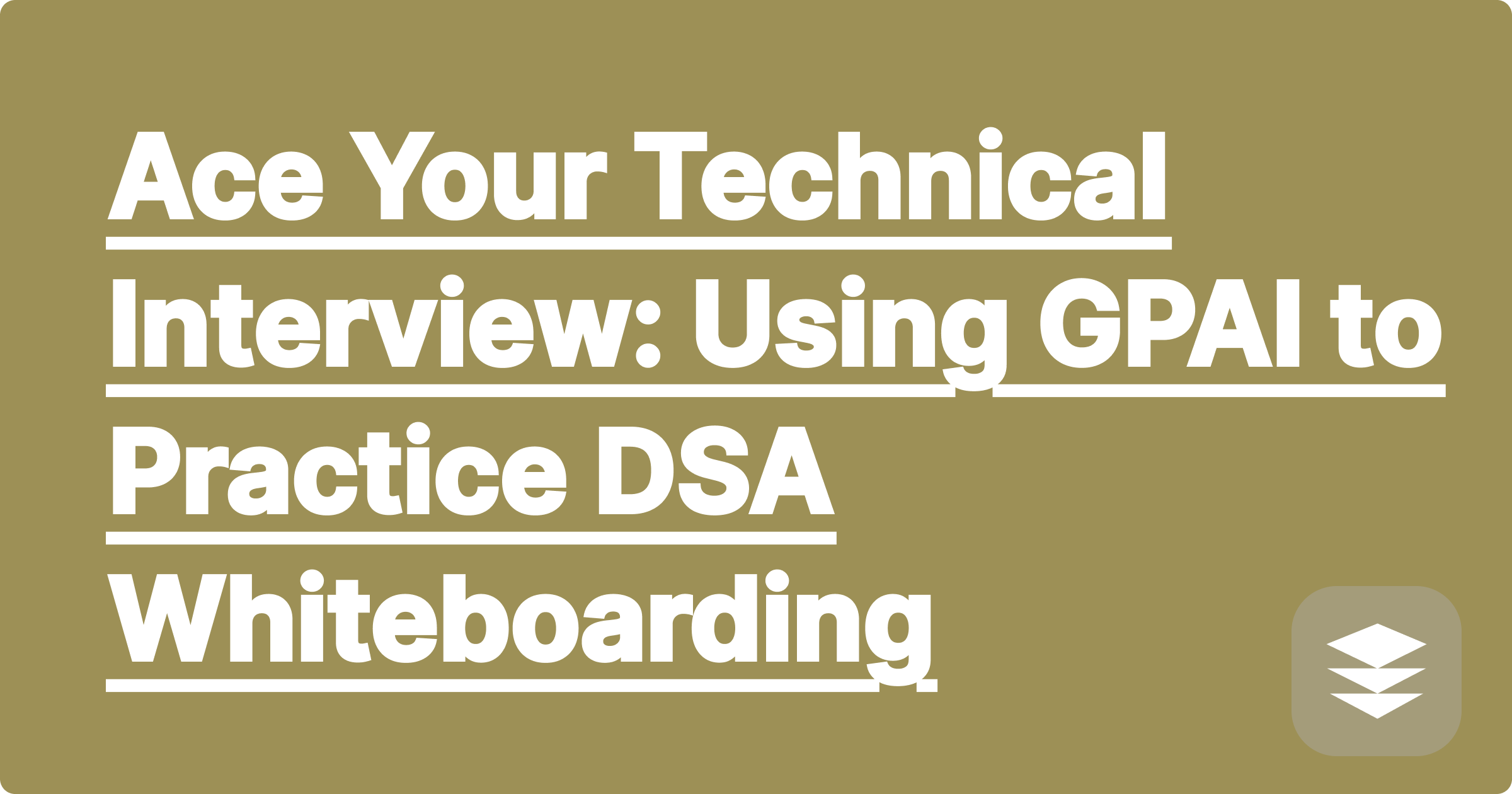
You’ve landed the technical interview at your dream company. You know the moment is coming: the interviewer will present a Data Structures and Algorithms (DSA) problem and say, "Walk me through your thought process on the whiteboard." This is where countless qualified candidates freeze. It’s one thing to code in an IDE; it's another to articulate your logic while coding on a blank slate under pressure.
Traditional practice involves staring at problems on LeetCode. But this fails to prepare you for the most critical part of the interview: communication. You need a way to practice the entire whiteboarding workflow. This is where AI whiteboarding practice becomes a game-changer for your technical interview prep ai strategy.
The interviewer isn't just checking if you can get the right answer. They are evaluating your problem-solving process, your communication skills, and your ability to think like an engineer. You're being judged on your ability to:
A tool like GPAI Solver can act as your personal interview simulator, helping you practice all four of these critical skills.
Here’s a step-by-step guide to using AI as your tireless interview practice partner. First, find a classic interview problem, like "Reverse a Linked List." Then, instead of just solving it, you simulate the interview with GPAI.
The true power of using an ai whiteboarding practice tool is getting immediate, expert-level feedback. What if you're not sure your initial approach is the most optimal? You can ask GPAI directly.
This allows you to prepare for follow-up questions and demonstrate a deeper level of understanding.
A technical interview is your chance to show how you think. Don't let the pressure of a blank whiteboard hide your true abilities. By practicing the art of communication and problem-solving with an AI partner, you can walk into your interview with the structure, confidence, and clarity needed to impress. Your goal isn't just to write code; it's to demonstrate that you are a thoughtful, articulate engineer.
The journey to landing a top tech job is paved with practice. But it has to be the right kind of practice. Stop just solving problems in silence. Start practicing the performance of the interview itself. A tool like GPAI is the ultimate partner for honing the communication skills that will set you apart.
[Ready to ace your next technical interview? Use GPAI Solver and Cheatsheet to build your DSA knowledge and practice your communication. Sign up now for 100 free credits and land that dream job.]
Why Your CS Degree is 50% Theory: How to Bridge the Gap with AI
Debugging in Your Head vs. AI: A Smarter Way to Find Bugs
From Pseudocode to Python: How AI Can Translate Your Professor's Logic
Ace Your Technical Interview: Using GPAI to Practice DSA Whiteboarding
Understanding Operating Systems: Visualizing Semaphores and Deadlocks with AI
Your Personal AI Teaching Assistant for Machine Learning Concepts
How to Document Your Code Instantly with an AI Comment Generator
The Best Way to Learn Computer Networking: From OSI Model to Packet Tracing
Database Design Made Easy: How AI Can Help You with ER Diagrams and SQL
Surviving Your Software Engineering Group Project with AI-Powered Tools